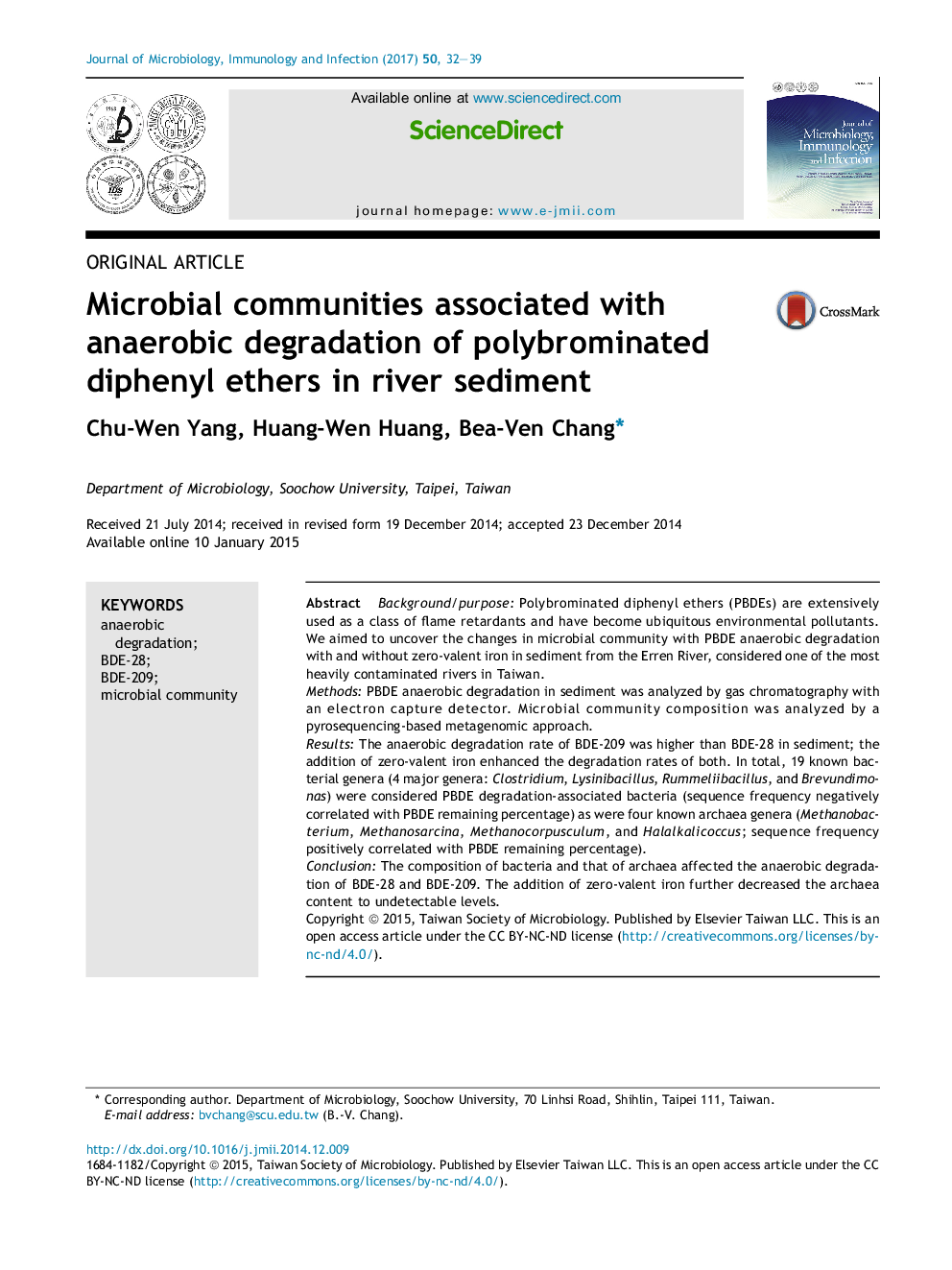| کد مقاله | کد نشریه | سال انتشار | مقاله انگلیسی | نسخه تمام متن |
|---|---|---|---|---|
| 5669047 | 1407936 | 2017 | 8 صفحه PDF | دانلود رایگان |
Background/purposePolybrominated diphenyl ethers (PBDEs) are extensively used as a class of flame retardants and have become ubiquitous environmental pollutants. We aimed to uncover the changes in microbial community with PBDE anaerobic degradation with and without zero-valent iron in sediment from the Erren River, considered one of the most heavily contaminated rivers in Taiwan.MethodsPBDE anaerobic degradation in sediment was analyzed by gas chromatography with an electron capture detector. Microbial community composition was analyzed by a pyrosequencing-based metagenomic approach.ResultsThe anaerobic degradation rate of BDE-209 was higher than BDE-28 in sediment; the addition of zero-valent iron enhanced the degradation rates of both. In total, 19 known bacterial genera (4 major genera: Clostridium, Lysinibacillus, Rummeliibacillus, and Brevundimonas) were considered PBDE degradation-associated bacteria (sequence frequency negatively correlated with PBDE remaining percentage) as were four known archaea genera (Methanobacterium, Methanosarcina, Methanocorpusculum, and Halalkalicoccus; sequence frequency positively correlated with PBDE remaining percentage).ConclusionThe composition of bacteria and that of archaea affected the anaerobic degradation of BDE-28 and BDE-209. The addition of zero-valent iron further decreased the archaea content to undetectable levels.
Journal: Journal of Microbiology, Immunology and Infection - Volume 50, Issue 1, February 2017, Pages 32-39
